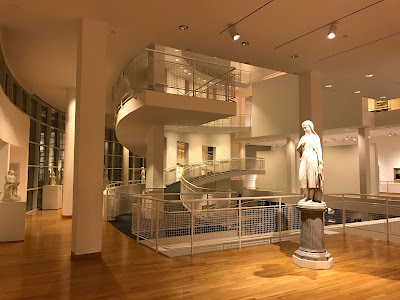The sleek, bustling new central station, conveniently surrounded by a cluster of new transit oriented development, consolidates boarding to international trains traveling north, south east and west from the city. It also connects directly to Vienna's metro, streetcar, bus, bikeway and pedestrian systems:
One of the details that I was particularly impressed with was the well-thought-out access for passengers to the station's 6 train platforms that run parallel to one another.
Typically in such arrangements, there is a lower pedestrian access passageway that links the platforms; but often this passageway can be dark, unattractive and occasionally unsafe-feeling if there is a lack of natural surveillance.
The designers of Vienna's Hauptbahnhof train station solved this issue by converting the lower passageway into a bright, airy multi-level shopping hall. Stores and cafes line the sides, making the space feel lively while providing travelers with useful goods and services and a great diversion to pass the time while waiting for one's train departure time.
Running down the center of the shopping hall are a series of glass elevators and escalators marked with the numbers of the various train platforms. When it is time to board a train, one need only go up a level, and then walk out right onto the platform:
This seamless connection for passengers to the train platform is a wonderful innovation that helps keep every step of travel by train to Vienna a high quality experience:
The Vienna Hauptbahnhof train station's website has a cool 3D image tour of the construction process. (click here to take the tour)

































